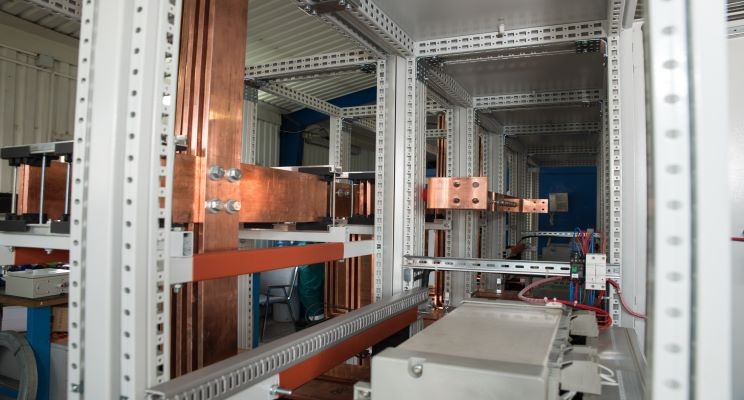Busbar systems play a crucial role in the efficient and safe distribution of electrical power within various industrial, commercial, and residential settings. This comprehensive guide explores the significance of busbar systems, their functionalities, types, and applications in modern electrical distribution networks.
Navigate to this web-site” is a directive often used to instruct someone to visit a specific website or URL for information, services, or content. It’s a straightforward command indicating the location of online resources or digital content relevant to the conversation or topic at hand.
Introduction to Busbar Systems
Definition and Purpose
- Conductivity Backbone: Busbars are conductive metal bars or strips used to distribute electrical power from one point to multiple destinations.
- Efficiency and Reliability: Provide a reliable and low-resistance pathway for electrical current transmission, reducing energy loss and enhancing system efficiency.
Key Components
- Material Composition: Typically made of copper or aluminum for high conductivity and durability.
- Insulation: Insulated supports and coatings protect against electrical faults and ensure safe operation.
Functions of Busbar Systems
Power Distribution
- Centralized Distribution: Transmit electrical power from generators or transformers to various loads and equipment within a facility.
- Flexible Configuration: Allow for modular expansion and reconfiguration to accommodate changing power demands and system upgrades.
Grounding and Earthing
- Safety Measures: Serve as grounding conductors to divert fault currents safely to the ground, preventing electrical hazards and equipment damage.
- Compliance: Meet safety standards and regulations, such as NEC (National Electrical Code) requirements for grounding and bonding.
Types of Busbar Systems
Based on Application
- Low Voltage Busbars: Used in residential and small commercial buildings for local power distribution.
- Medium Voltage Busbars: Employed in industrial plants and larger facilities to distribute power to machinery and heavy equipment.
Based on Configuration
- Single Busbar System: Simplest configuration with one main busbar for power distribution.
- Double Busbar System: Offers redundancy and reliability with two parallel busbars for critical applications and maintenance flexibility.
Advantages of Busbar Systems
Efficiency and Cost-effectiveness
- Reduced Energy Loss: Lower electrical resistance compared to traditional cable systems minimizes heat dissipation and energy wastage.
- Space Optimization: Compact design saves installation space and reduces material costs compared to extensive cable networks.
Reliability and Maintenance
- Minimal Downtime: Facilitates quick and efficient maintenance, repairs, and upgrades without disrupting ongoing operations.
- Fault Identification: Simplifies troubleshooting and fault isolation through structured layout and labeling.
Applications Across Industries
Industrial Sector
- Manufacturing Facilities: Power distribution to assembly lines, machinery, and industrial processes requiring high reliability and scalability.
- Data Centers: Ensures continuous power supply to servers and IT equipment, maintaining operational uptime and data integrity.
Commercial Buildings
- Office Complexes: Efficient distribution to lighting, HVAC systems, and electronic devices, supporting daily operations and occupant comfort.
- Shopping Malls: Reliable power supply to retail outlets, escalators, and signage for seamless customer experience.
Renewable Energy
- Solar and Wind Farms: Integrates with renewable energy sources to distribute generated power to grid connections or storage systems efficiently.
- Energy Storage Systems: Supports the charging and discharging of batteries in grid-tied or off-grid applications.
Considerations for Design and Installation
Engineering and Design
- Load Calculations: Determine current ratings and busbar sizing based on anticipated loads and peak demands.
- Temperature Rise: Consider thermal management to prevent overheating and ensure continuous operation within safe temperature limits.
Installation Best Practices
- Proper Support and Insulation: Secure busbars with adequate supports and insulating materials to prevent mechanical stress and electrical faults.
- Electrical Clearances: Maintain specified clearances to minimize the risk of arcing and ensure compliance with safety standards.
Future Trends and Innovations
Smart Grid Integration
- Digital Monitoring: Incorporates IoT-enabled sensors and analytics for real-time monitoring of power flow and system performance.
- Predictive Maintenance: Utilizes predictive algorithms to identify potential issues and optimize busbar system reliability.
Sustainable Solutions
- Materials and Recycling: Explore eco-friendly materials and recycling initiatives to reduce environmental impact during manufacturing and disposal.
- Energy Efficiency: Enhance efficiency through advanced materials and design optimization for sustainable energy management.
Conclusion: Enhancing Electrical Distribution with Busbar Systems
Busbar systems represent a cornerstone of modern electrical distribution infrastructure, offering unparalleled efficiency, reliability, and safety across diverse applications. From industrial plants and commercial buildings to renewable energy installations, busbars play a vital role in optimizing power transmission while minimizing environmental impact and operational costs. By embracing technological advancements and adhering to best practices in design, installation, and maintenance, stakeholders can leverage busbar systems to meet growing energy demands and ensure sustainable, resilient electrical distribution networks for future generations.
